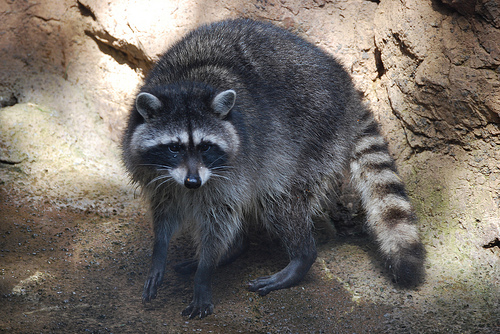Raccoons are medium-sized, furry animals that live in forests, but during the course of time, they have extended their living space to urban areas, causing stress and problems to many homeowners. This wildlife may look cute and friendly, but they are rather aggressive animals that carry deadly diseases. They can transfer infectious diseases through their scratches, bites, fecal matter, and even through indirect contact.
But before you start panicking about the presence of these pests and the dangers they present, you must understand that contraction of infectious diseases from raccoons is very rare. The best way to avoid suffering from dangerous health conditions is to avoid these creatures. Do not approach them or try to handle them, especially if they look sick. More importantly, if you handle raccoon poop- even when you are using gloves, immediately wash your hands using an antibacterial soap.

Common Raccoon-Borne Diseases
Leptospirosis: Raccoons are considered as a rodent; thus, just like any other rodent, they are carriers of a bacterial disease which leads to Leptospirosis. This type of disease is usually carried in the urine of the infected animal. It can be transmitted if individuals drink or eat food that has been contaminated with these bacteria. The common symptoms of this health condition include:
- High fever.
- Body pain, muscle aches, and severe headache
- Vomiting and diarrhea
- Liver and kidney problems
Food Poisoning
Salmonella and E-Coli are the two types of bacteria that are commonly associated with food poisoning. These bacteria can be found in raccoon excrement. Humans might suffer from the same symptoms as eating spoiled food if they come in contact with raccoon droppings, and then ingesting the microorganisms by unknowingly transferring it from their hands to their mouth. Unfortunately, these bacteria can stay inactive if the environment is dry; but they can become active under a favorable environment. The warning signs of food poisoning may comprise of abdominal pain and severe diarrhea. This medical condition is highly dangerous for children and the elderly.
Rabies
Raccoons are known carriers of the rabies virus. Rabies is one of the most dangerous viral diseases which can be transferred to humans and pets. This virus can be transferred through the raccoon’s bite and scratch. For this reason, it is best to stay vigilant and keep away from potentially infected raccoons. You can identify a rabid animal if it shows any of the following signs:
- The raccoon may look sick
- Moves awkwardly, or may stumble as if drunk, or moves in circles
- Froth in the mouth -Aggressive and may attack inanimate objects
If you suspect that you or any of your family members have been in close contact with a rabid raccoon, immediately see a doctor to get the necessary treatment. Do not wait until symptoms start to develop since it may be too late.
Raccoon Roundworm
This wildlife can excrete roundworm eggs through their excrement. The eggs can become airborne because they are very light. For this reason, humans and animals can suffer from infection when they inhale these eggs or incidentally ingest it. Roundworm parasites can lead to dangerous health complications since these worms can attack the central nervous system and impair the organs. The symptoms of this condition consist of:
- Fatigue
- Lack of coordination
- Inability to control the muscles
- Blindness and coma
The rodent-borne diseases listed above are just some of the dangers brought about by these pests. If you want to keep rodents out of your home, you must take precautionary measures, including sealing your garbage cans and eliminating factors that might attract them into your yard and home. Most importantly, if you find any of this wildlife, immediately contact a professional to handle these pests. Professional exterminators know how to properly and safely handle these animals.
Citations:
- Eat_Crow.”Raccoon”. March 2, 2008 . Online Image. Flickr. Feb 18, 2013
Kris Lim is a writer for health websites where she offers comprehensive information about the various diseases brought about by pests. Some of her works have also been featured in pest control websites. In this article, she lists down 4 common rodent-borne diseases in the hopes to raise awareness regarding these pests.



All raccoon’s DO NOT carry the rabies virus. If you see one out during the day, doesn’t mean they’re rabid, they’re out feeding.There is more of a chance catching rabies from a stray dog, cat or even a squirrel. We receive orphaned wild life to raise, rehabilitate & release the animal’s when their old enough & healthy enough to be released back into the wild. Both my wife & I have raised & released over 500 raccoon’s, & just by playing with them, we’ve both been bitten or scratched by most of them. They weren’t attack’s, they were just playing, like a dog or cat. A rabid animal will die within approx. a week of catching the virus. Don’t be afraid of them, just leave them alone.